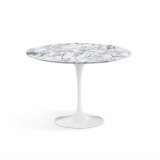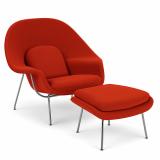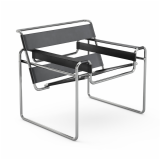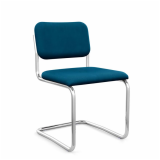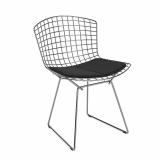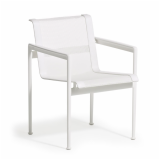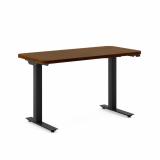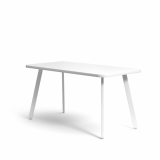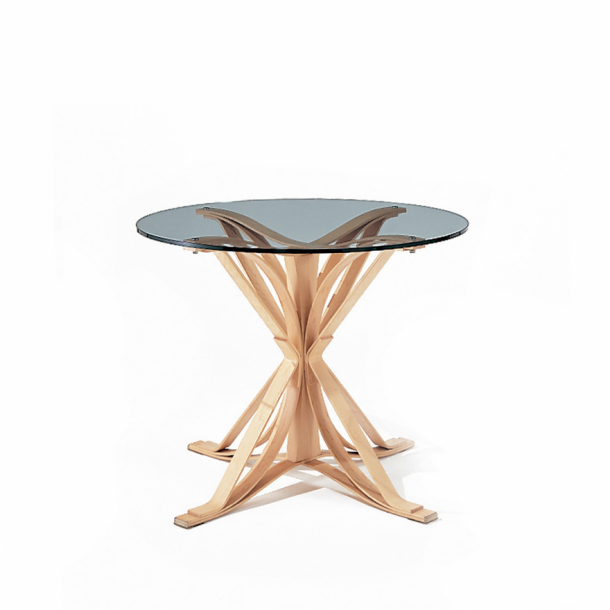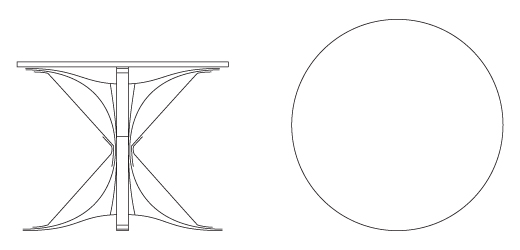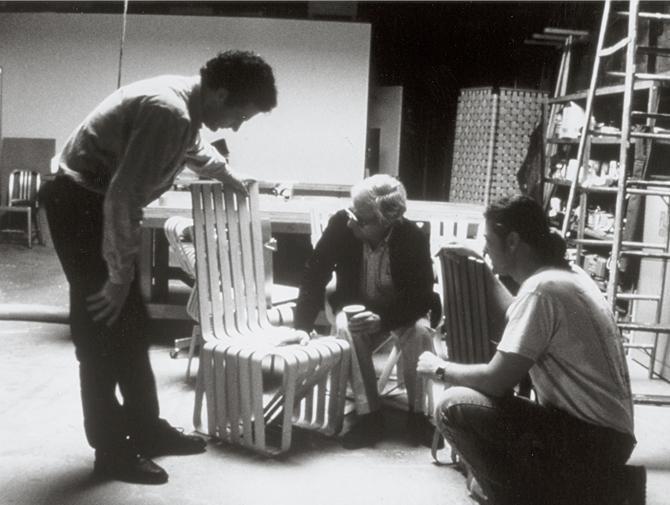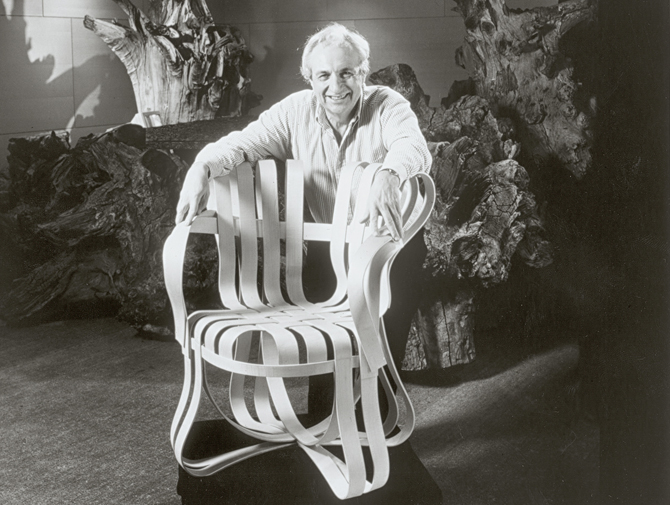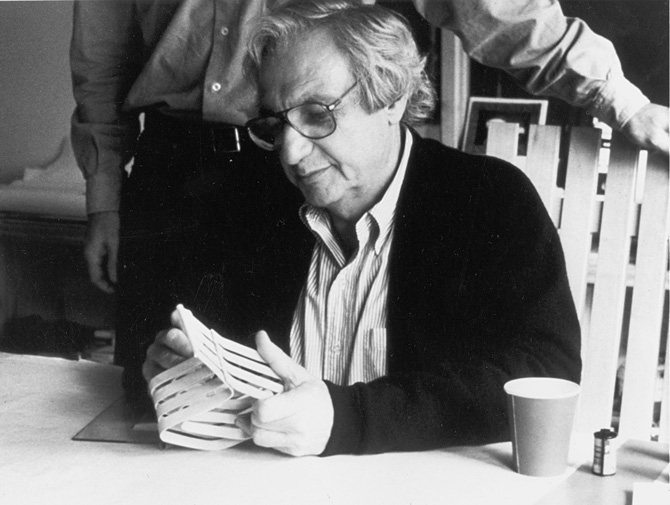Neither party knew what lay ahead when Frank Gehry came to Knoll in 1989 with an idea for a new generation of bentwood furniture inspired by the simple bushel basket. Despite the uncertainty, a studio was set up and, fueled by mutual optimism, the investigation began.
“Everything I’ve always done has been a reaction against the usual expectations of the furniture market. I wanted the chair to come out of my own work, the shapes of my buildings… What the Knoll people first said to me was, ‘It probably won’t work, but maybe it will. You’ve been thinking about it. Something will come of it.’ All bentwood furniture until now has relied on a thick and heavy main structure and then an intermediary structure for the seating. The difference in my chairs is that structure and the seat are formed of the same incredibly lightweight slender wood strips, which serve both functions. What makes this all work and gives it extraordinary strength is the interwoven, basket-like character of the design… It really is possible to make bentwood furniture pliable, and springy and light.”*
After three years of experimentation and exploration, the collection was debuted in the Frank Gehry: New Furniture Prototypes show at The Museum of Modern Art in New York.
*From an interview originally run in Architectural Record (c) February 1992, The McGraw-Hill Companies. www.architecturalrecord.com.















